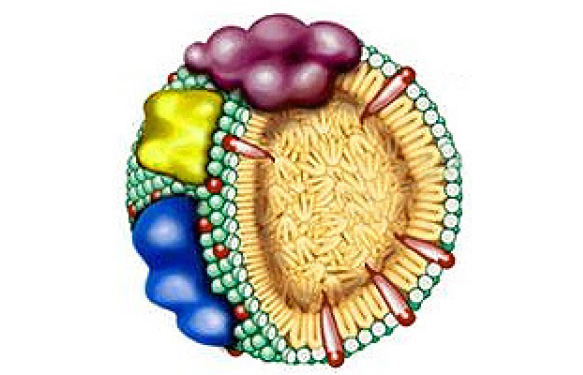The year 2015 was full of significant publications in the field of ophthalmology. Here’s a snapshot of 2 “proof-of-concept” studies suggesting that “Sterols” could be promising approaches to treat cataract.

Cataract is the opacity of the lens of the eye caused by alterations and aggregations of the chaperone crystallin protein class. Cataract is related to aging, congenital diseases, diabetes or smoking. This pathology affects about 20 million of patients in the word and is the major cause of blindness (W.H.O.). To date, the only therapeutical approach to restore clear vision is refractive surgery.
Unfortunately, many people remain blind from cataract, due to a lack of access to eye care. There is a great need for novel non-surgical but therapeutically active strategies.
Sterol-based eye drops for treating cataract?
2 major research breathroughs were achieved in 2015 with the publication of articles focusing on cholesterol-like Sterols.
Pr. Zhang and collaborators (University of California, San Diego & Peking University, Beijing) have shown that Lanosterol (and not cholesterol!) significantly decreases preformed protein aggregates and cataract severity in in vitro and in cell-transfection experiments. In parallel, Pr. Gestwicki (University of Michigan, Ann Arbor) and his team have found that eye drops containing another sterol (25-hydroxy-cholesterol) was able to clear up cataracts in animals with hereditary forms and in human ex vivo lense explants. These findings support the idea that Sterol-derived treatments could be attractive therapeutical approaches to preventing / treating cataracts by stabilizing chaperone crystallins without surgery.
What’s next?

The 2 studies are noticeably based on preliminary in vitro testing of bioactive small molecules. Many other experimental work and (pre-)clinical studies need to be conducted before obtaining efficient topical treatments, available world-wide, able to cure cataract whatever its etiology and whatever the age of the patient.
Nevertheless, these 2 works clearly bring hopes in the field of ophtalmology.
Sterol- and Crystallin-related for research and drug discovery applications
Various reagents and lab services are available to the research community for studying lipids and their roles in diseases and particularly in ophtalmology. Here is a selection of a few of them (together with the illustrations of this post with practical experimental results obtained with primary antibodies).
Bioactive sterols:
- 20(S)-Hydroxycholesterol [5-Cholesten-3beta 20alpha-diol] (CAS 516-72-3) is an endogenous ligand for the LXR receptor. It has anti-adipogenic and pro-osteogenic effects in mesenchymal stem cells mediated via a non-LXR dependent pathway. Its osteogenic effects have been shown to be mediated by activation of hedgehog signaling and expression of genes associated with Notch signaling.
- 24(S)-Hydroxycholesterol (CAS 474-73-7) is an important cholesterol metabolite (cholesterol 24-hydroxylase) found in the brain. It is an endogenous agonist of the nuclear receptor LXR. It has been shown to induce cell death in neuroblastoma cells, possibly via a necroptosis pathway. 24(S)-Hydroxycholesterol has also been found to be a high affinity ligand for ROR.
- 25-Hydroxycholesterol [5-Cholesten-3ß, 25-diol] (CAS 2140-46-7) is a bioactive cholesterol metabolite resulting from the action of cholesterol 25-hydroxylase on cholesterol.
- 27-Hydroxycholesterol [5,25R-Cholesten-3ß,26-diol] (CAS 20380-11-4) is a metabolite resulting from the action of sterol 27-hydroxylase on cholesterol. Concentrations of 27-hydroxycholesterol are elevated in patients with Alzheimers disease and mild cognitive impairment.

CRYAB detection with an anti CRYAB (Cat nr 157PAB14563). (Human (1) and mouse (2) skeletal muscle). - 7alpha-Hydroxycholesterol [5-Cholesten-3beta, 7alpha-diol] (CAS 566-26-7) is a metabolite resulting from the action of cholesterol 7 alpha-hydroxylase on cholesterol and is the first intermediate and a rate limiting step in the major pathway for bile acid synthesis in humans.
- U-18666A (CAS 3039-71-2) is a potent Cholesterol transport inhibitor (oxidosqualene reductase inhibitor). It inhibits the egress of cholesterol from late endosomes and lysosomes. U18666A is also used to study Niemann-Pick disease and for assessing the importance of molecular trafficking through the lysosomal pathway in other conditions.
Human Dry Eye Disease Array Kit (Quantibody®):
The Dry Eye Disease Quantibody® array is a multiplexed sandwich ELISA-based quantitative array platform from Raybiotech combining the advantages of ELISAs and the high throughput of arrays. It allows Life Scientists to accurately determine (<6 hrs) the concentration of 40 human Dry Eye Disease associated cytokinessimultaneously from any biological fluid (<50µl). This fluorescent array can be performed through RaybioTech certified service providers like tebu-bio in Europe.
Cholesterol Cell-Based Detection Assay Kit:
The Cholesterol Cell-Based Detection Assay Kit is a fluorescence-labeled method for histochemical identification of unesterified cholesterol in vivo and in vitro. (cat. nr 157KA1304).

Sources
- Zhao L. et al. “Lanosterol reverses protein aggregation in cataracts” (2015) Nature 523, 607–611 – DOI: 10.1038/nature14650
- Makley L.N. “Pharmacological chaperone for a-crystallin partially restores transparency in cataract models” (2015) Science 350, 6261, 674-677 – DOI: 10.1126/science.aac9145
Looking for more lipid or eye-related disease research tools?
Like to receive recent data regarding drug discovery advances on a regular basis?
Leave a message below or subscribe to tebu-bio’s thematic eNewsletters!



